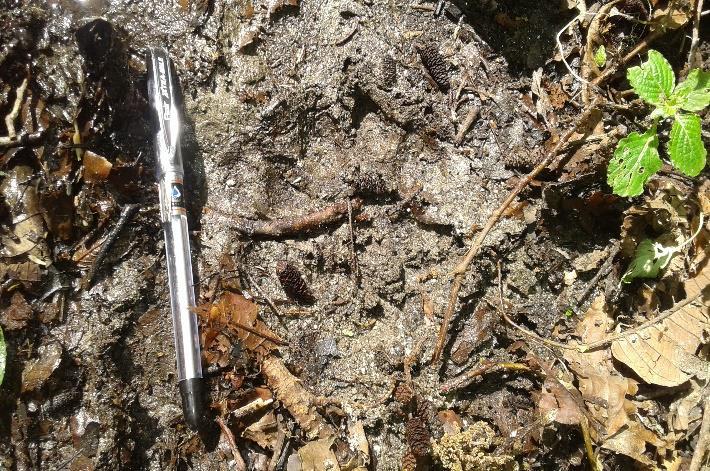Bishnu Maharjan
Leopards (Panthera pardus) are the most widely distributed wild cats, and occupy a broad variety of habitats, from rainforests to deserts and from the fringes of urban areas to remote mountain ranges. In case of Nepal, Leopards are recorded throughout the country ranging from the Terai to the Himalayas. The leopard (Panthera pardus) is a widespread and relatively common large carnivore, but the species is declining in large parts of its range. This research will assess the abundance of Common Leopard which will be helpful in formulating plans and management or the conservation of predator around the National Park.

Pugmark.
Leopard, an umbrella species, is a top predator in the ecosystem of Shivapuri Nagarjun National Park which determines the condition of entire National Park. Relationship between humans and wildlife is extremely necessary for maintaining ecological balance. Though the localities and National Park has evidence of presence of common leopard in forest region but there is no any documented information and extent of Human Leopard Conflict (HLC) in these surrounding localities of Park Forest. In this situation, this study will provide information on death and injury of human, cattle loss and leopard deaths due to HLC. The relationships between severity of conflicts and distance of SNNP will be developed in order to know whether conflicts increases with increase in distance from forest or not. GIS map of affected localities based on severity of conflict (high, medium and low) indicating the hotspots of conflict areas will be prepared. This will help to identify the severely threatened places that will assist for any remedial action. Besides, the affected localities will be aware about the ecology, behaviour and role of Leopard in the ecosystem. The awareness materials will be prepared and translated in their local language with less text and more figures, charts and diagrams.
This study might contribute in enhancing the knowledge and capacity building of local people through their direct involvement and interaction in output sharing local level workshop. With the help of local people participation and discussions, the local level cost-effective measures will be developed to minimize HLC. This awareness program and conservation education will ultimately help to contribute in human leopard coexistence in the study area.